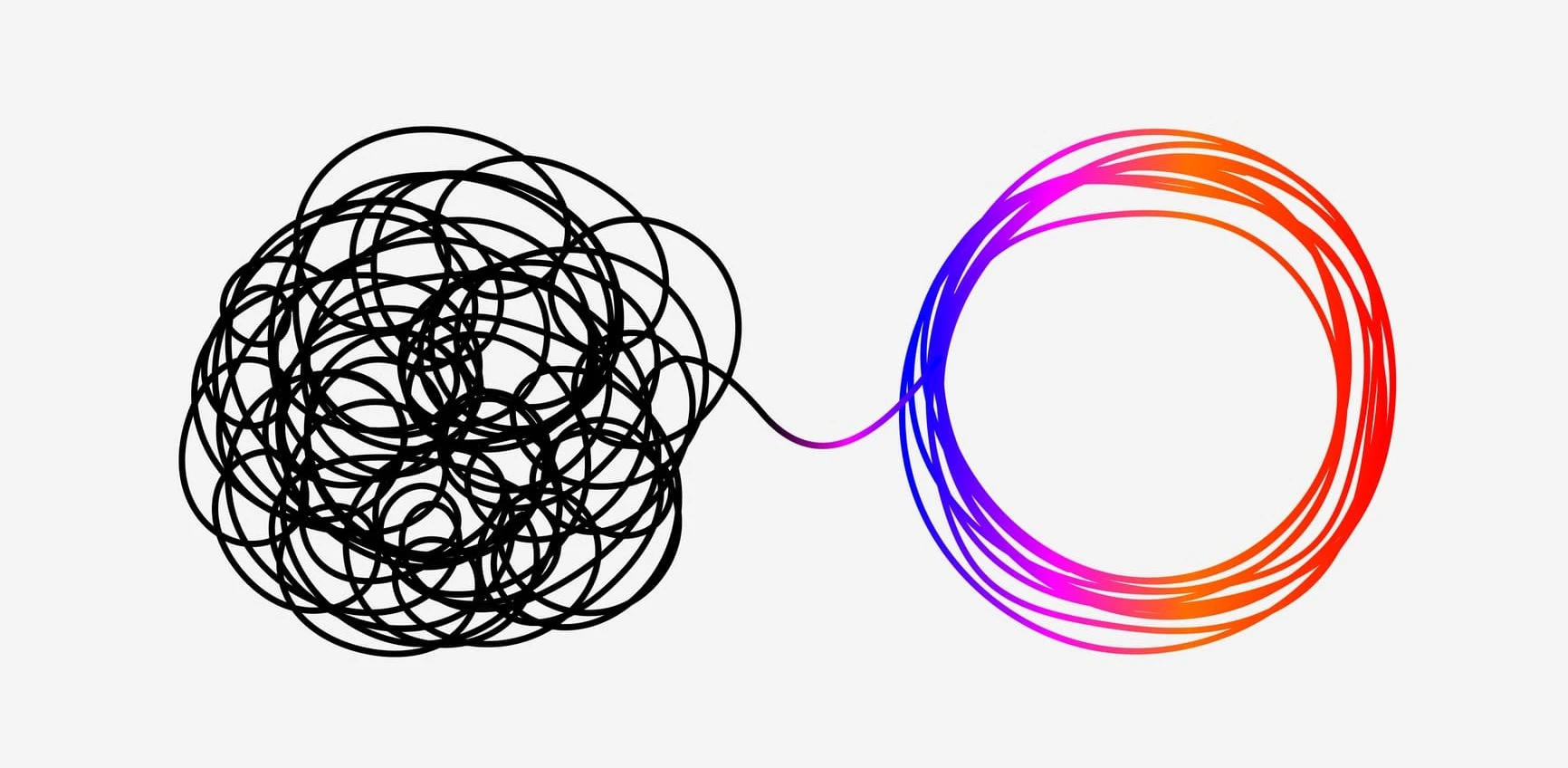Meetings serve an important purpose in nearly every organization. They create a space for teams to discuss ideas, make decisions, and collaborate on ongoing projects.
It is no secret that there is a lot of information exchanged before, during, and after a meeting. Without a clear plan to manage the discussions and decisions that happen during meetings, things often slip through the cracks.
To avoid losing track of meeting tasks and notes, thousands of teams use meeting agenda software to optimize meeting performance, improve productivity, and increase meeting effectiveness.
In this article, we will take a closer look at the following questions:
- Why are meeting agendas important?
- What does a meeting agenda software do?
- What is the best meeting agenda software?
<div id="1"></div>
Why are meeting agendas important?
A meeting agenda creates the foundation for successful, effective meetings. Regardless of size or meeting purpose, a meeting agenda is necessary for accomplishing goals and improving business outcomes. The meeting agenda clearly states the meeting objectives, discussion topics, and actionable goals. When used correctly, the agenda keeps the conversation focused and helps hold everyone accountable for action items once the meeting is complete.
Simply put, a well-designed and executed meeting plan keeps everyone on the same page before, during, and after the meeting.
<div id="2"></div>
What does a meeting agenda software do?
A meeting agenda software is an online productivity tool designed to help teams automate and streamline their meeting workflow. With this type of software program, teams can easily monitor and track meeting objectives from start to finish. It also acts as a purpose-built space for collaboration, information sharing, and feedback. From executive staff meetings to daily huddles, meeting agenda software programs help teams save time, be more prepared, and get more out of every session.
Key Features
Meeting agenda software programs have various features that help teams through the lifecycle of a meeting. These purpose-built features enable teams to prepare for meetings, collaborate in real-time, and hold attendees accountable for actionable meeting items.
Think:
- Time-saving meeting templates to help teams prepare for meetings
- Real-time note taking functions to keep track of meeting notes and decisions
- Work app integrations that allow teams to share and organize meeting notes, assign tasks, and access meeting details at any time
Although not all meeting agenda software programs are created equal, the information below outlines some of the main features of these programs that help teams run more effective, productive meetings.
Before the Meeting
Great meetings require preparation and planning. Meeting agenda software makes preparing for staff meetings easy and stress-free.
With a meeting agenda software program, teams can:
- Schedule meetings – sync your team's calendar with the software to schedule meetings, invite attendees, and even add video conferencing links.
- Create agendas – customizable templates help teams save time preparing the meeting agenda.
- Share agendas – collaborate with your meeting attendees before you meet by sharing the agenda and allowing them to add notes or suggested talking points.
- Review notes from previous meetings – easily pull notes from past meetings or import them into your meeting agenda to save time and avoid going in circles during your call.
During the Meeting
Documenting meeting notes is a powerful way to share information and drive successful meeting outcomes. Stay on top of meeting tasks and actions items and generate actionable next steps with these in-meeting functions.
With a meeting agenda software, teams can:
- Organize meeting notes – collaborate with team members in real-time and record meeting notes in one central place.
- Record decisions and action items – document important decisions and tasks for action items on the agenda so everyone is informed and accountable for the next steps.
After the Meeting
Once the meeting concludes, meeting agenda tools make it easy for teams to take action and share information across the organization. With a meeting agenda software, teams can:
- Share meeting notes and decisions – easily share meeting notes with the rest of the team or organization. Highlight findings and add reminders for any necessary follow-up discussions.
- Delegate and manage action items – take action on decisions by assigning and tracking tasks directly in the program.
- Sync meeting details with popular work apps – seamlessly integrate with popular work apps like Asana and Slack so you can easily access meeting information and collaborate with your team.
Now that we've reviewed the key features of a meeting agenda software, let's look at specific programs and how they compare to one another.
<div id="3"></div>
The Best Meeting Agenda Software Programs
1. Fellow
Fellow is the top rated meeting management app that helps your team build great meeting habits by collaborating on agendas, sharing meeting notes, and documenting action items. Whether in person or remote, Fellow helps your team build great meeting habits through real-time notetaking, action item tracking, and an expert-approved meeting template library. With Fellow, you can explore and use a variety of ready-to-use templates, organize your ideas in Streams to inspire productivity, give and receive feedback to encourage continuous improvement, enable important one-on-one conversations across your company, and so much more!
Here's how Fellow stacks up against other meeting agenda software programs.
Features
Before the Meeting
✓ Agendas – access meeting pre-built meeting templates or build your own
✓ Past Meeting Notes – review past meeting notes
✓ Scheduling – meeting scheduling is available directly in Fellow
During the Meeting
✓ Note-taking – record meeting discussions, decisions, and action items; limited search functionality post-meeting
After the Meeting
✓ Task management – use Fellow's action items page to assign and prioritize tasks
✓ Information sharing – share meeting notes via email, Slack, Microsoft Teams, or within the app using the Share button.
✓ Meeting feedback – feedback tools available with paid plans only
Always Available
✓ App integrations – integrate with 40+ work apps and tools
✓ Live chat support – available during business hours
✓ How-to guides and videos – available via blog articles and newsletter tips
✓ Free e-books for continuing education – one-on-one and team meeting guides available
✓ Chrome Extension – mini version of Fellow with over 30,000 installs!
Pricing
Free plan: free up to 10 users
- Limited searchable notes
- No due dates for action items
- Limited app integrations
Paid plans: starting at $6/month
- Unlimited searchable notes
- Additional core features
- Access to all app integrations
{{start-having-better-meetings="/blog-inserts"}}
<div id="1"></div>
2. Docket
Docket is another popular meeting management and team collaboration platform. Docket's mission is to promote better alignment and productivity during meetings through planning. The Docket workspace is designed to help teams create agendas, document decisions, and track action items. Unlike Fellow, Docket has a limited list of third-party app integrations. Similarly, Docket must be connected to third-party apps to store meeting resources and assign meeting action items.
NOTE: DOCKET IS NO LONGER ALLOWING SIGNUPS, AND WILL BE SUNSETTING THEIR SERVICE ON DECEMBER 8, 2022
Let's take a closer look at how Docket stacks up against other meeting agenda software programs.
Features
Before the Meeting
✓ Meeting Agendas – use pre-built templates or create your own; custom templates only available with paid plans
X Past Meeting Notes – review recurring meeting history; restricted to 1-year with standard paid plan
✓ Scheduling – meeting scheduling is available directly in Docket
During the Meeting
✓ Notetaking – document meeting discussions, decisions, and next steps; notes stored externally via a third-party app
After the Meeting
✓ Task management – basic task management functions available in "My Tasks"; task management integrations recommended
✓ Information sharing – recap distribution available directly in the app
X Meeting feedback – not available with Docket
Always Available
✓ App integrations – yes; but limited to less than ten integrations
X Live chat support – not available
✓ How-to guides and videos – available in Docket Resources center
✓ Free e-books for continuing education – Docket’s "Guide to Awesome Meetings" available
X Chrome Extension – not available
Pricing
Free plan: basic plan available
- Limited app integrations
- No custom or shared templates
- Limited access to meeting history
Paid plans: starting at $8/month
- Access to a complete list of app integrations
- Custom and shared agenda templates
- 1-year meeting notes history
3. Hypercontext
Hypercontext is a meeting management tool built specifically for managers. The app's mission is to empower managers to run more productive 1-on-1 and team meetings. Like the other platforms mentioned above, Hypercontext includes features like meeting agenda templates, notes sharing, and trackable action items.
However, Hypercontext focuses more heavily on the manager's role in producing results from meetings. Additionally, Hypercontext has a limited library of third-party app integrations, making it more challenging to integrate this tool with your team's full tech stack.
Let's look at how Hypercontext compares to other meeting agenda software tools.
Features
Before the Meeting
✓ Agendas – customizable meeting agenda templates for all meeting types; custom agendas and collaboration only available with paid plans
✓ Past Meeting Notes – available in meeting archives; limited searchability function
X Scheduling - not available directly on platform; must sync via calendar integrations
During the Meeting
✓ Note-taking – document meeting notes, minutes, and next steps in the app
After the Meeting
✓ Task management – "next steps" function allows managers to assign, add due dates, and remind
X Information sharing – share meeting notes via email or Slack; not available directly in the app
✓ Meeting feedback – real-time employee feedback and insights are available
Always Available
X App integrations – minimal direct app integrations; requires Zapier to connect most work apps
X Live chat support – not available
✓ How-to guides and videos – available in the Resources center
X Free e-books for continuing education – not available
✓ Chrome Extension - fully functional micro version of Hypercontext
Pricing
Free plan: free up to 1 user
- Limited ability to integrate with third-party apps
- No task management or meeting insights features
- No custom or shared templates
Paid plans: starting at $7/month
- Custom agenda templates
- AI-powered conversation insights
- Advanced support and storage
Start Building Better Meetings
Start building better, more productive meetings by taking advantage of the many features and functions of a meeting agenda software. With platforms like Fellow, you can save minutes every day and hours every week on meetings. Fellow is easy to set up and connect with your calendar, so you can start enjoying a smooth workflow that naturally makes your meetings more effective and worthwhile.
Don't let unproductive meetings slow you down
See the impact of fewer, shorter meetings, increased accountability, and enhanced productivity with Fellow.
Get started with Fellow today
.webp)
.webp)


